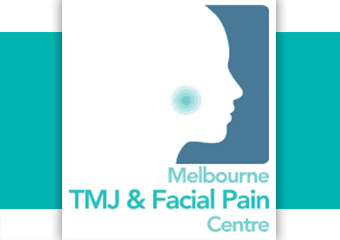
The Practice Manager
Melbourne TMJ & Facial Pain Centre / More Than Physio
Clicking on the Send Me Details Now button opens an enquiry form where you can message The Practice Manager directly
Welcome to Melbourne TMJ & Facial Pain Centre
Melbourne TMJ & Facial Pain Centre - TMJ Therapies
Servicing area
Caulfield North, Prahran, Windsor, Malvern, St Kilda, Melbourne, Toorak, South Yarra, Glen Iris, MelbourneFocus areas
What is TMJ?
TMJ stands for temporo-mandibular joint which is your jaw joint. The temporo-mandibular joint is formed by the mandible or jaw bone, joining with the temporal bone of the skull, just below and in front of the ear. You would have one temporo-mandibular joint on each side of your face. Each joint has a cartilage disc inside keeping the temporal bones and the mandible bone apart from each other to protect them from creating wearing of the bone surfaces as well as to act as shock absorber for the joint. The jaw joint is surrounded by a capsule or envelope enclosing it. The jaw movement is driven by many muscles responsible for its different actions. The TMJ is opened and closed many 1000’s of times each day as we eat, speak, breathe and yawn and is thus the focal point of much activity and physical forces.
What is TMJ Disorder?
The TMJ or jaw is a common area that can be susceptible to injury or sprain causing jaw pain, face pain, aches, neck pain, ear pain, or headaches. This usually occurs as a result of grinding (bruxing) or clenching of the teeth as a result of stress. TMJ can also be a result of dental work or from specific trauma.
Causes of TMJ Disorder (TMD)
- Jaw muscle spasm and inflammation due to over use or clenching / bruxing
- Jaw joint stiffness, inflammation and sometimes locking
- Trauma to the jaw due to a blow to the face or a car accident
- Neck and upper back muscle spasm and tightness
- Unsupported / inappropriate posture while sleeping or during waking hours
- Obstructive sleep apnoea may lead to night time bruxing
- Jaw muscle spasm following lengthy dental procedures
- Altered bite position due to a dental restoration / filling that is too high
- Upper neck joint stiffness from poor posture or other injury
- Poor head on neck posture
- Stress causing more clenching (bruxing) or tightness of all associated muscles
Symptoms of TMJ Disorder
- Popping, grinding or grating noises when moving your jaw, or opening and closing the mouth
- Facial or jaw pain, or tender jaw muscles
- Unable to open the mouth completely to eat certain foods or take big bites, as the jaw feels locked
- Regular headaches
- Tinnitus (ringing in the ears)
- Dizziness
- Uneven jaw movements when eating or speaking
- Difficulty or pain when yawning, chewing or opening the mouth wide
- Unusual wearing down of teeth (likely to be noticed by your dentist)
- Earache that spreads to the rest of the face
- Stiffness or pain experienced at the back of the head or in the neck
Treatment of TMJ Disorder
Assessment
Highlight the cause of your symptoms and pain and making a diagnosis is crucial to successful treatment. Several things will be noted in your initial consultation including any previous incidents or episodes, a thorough examination of your TMJ and surrounding muscles, general posture and your neck joints and muscles, and a look at your current sleeping position and your pillow.
Treatment
- Treating your Jaw Structures
- Self-help Exercises
- Treating your Neck
- Education about how you can help yourself between treatments
Treatment of Facial Pain
Structures such as joints, muscles, nerves, teeth and sinuses are sources of facial pain. Treatment involves not only treating the structures which are the source of the pain, but also addressing causative factors involved in those structures becoming painful and pain producing in the first place.
For more information about TMJ & Facial Pain, view our website, send us an email or give us a call
Click on Send Me Details Now to get started
Send Me Details Now